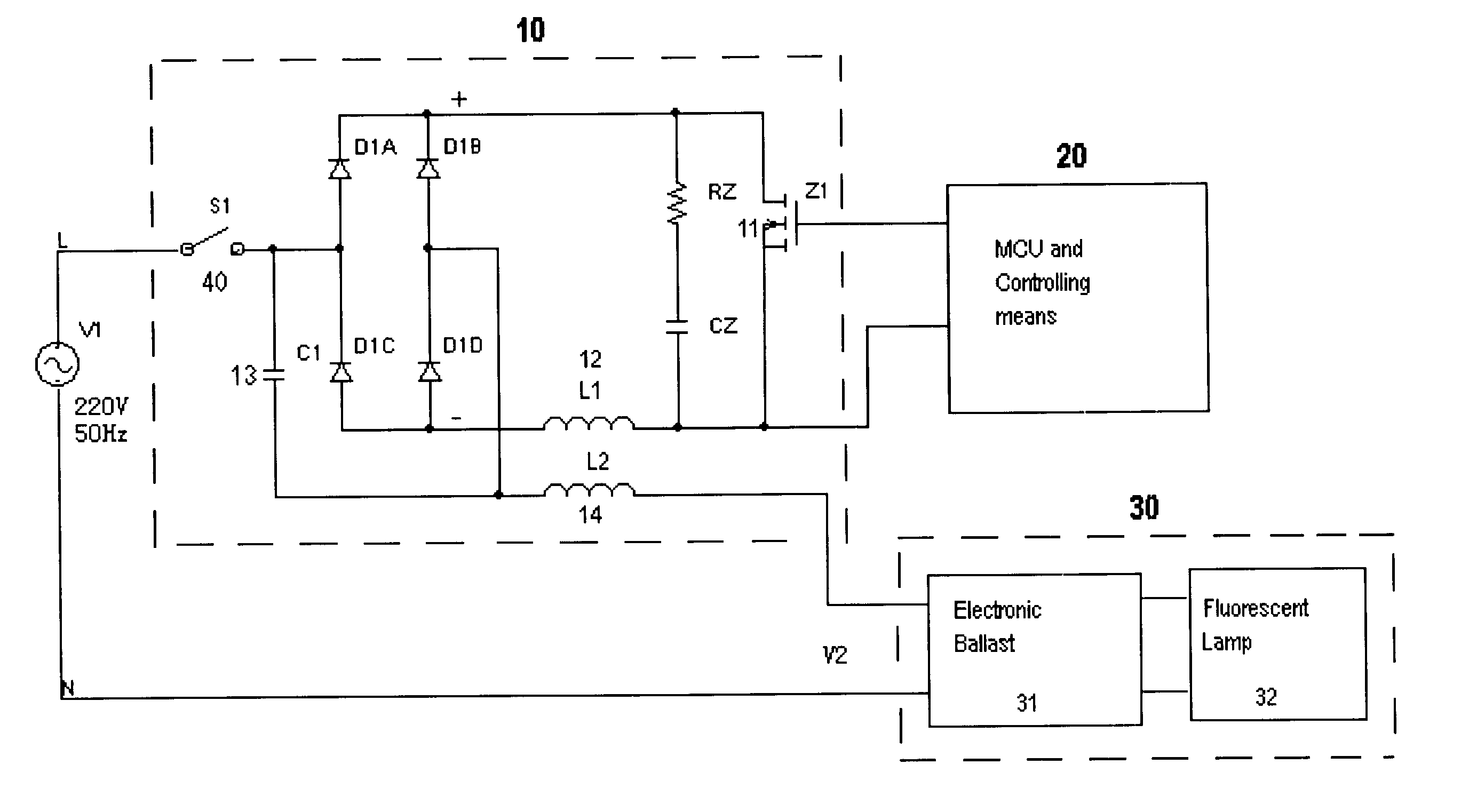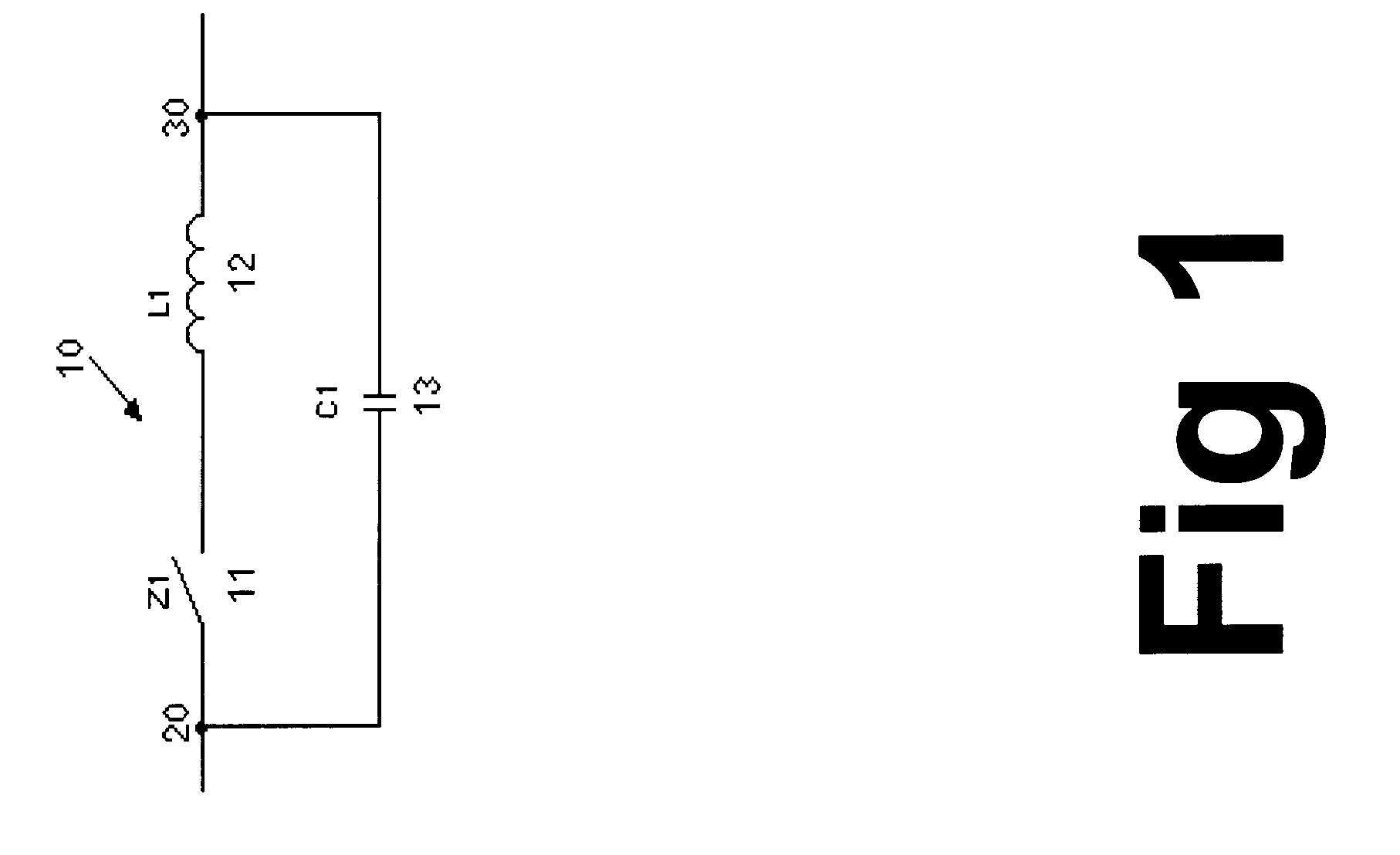Dimmer for energy saving lamp
a technology of energy saving lamps and dimmers, which is applied in the direction of electric variable regulation, process and machine control, instruments, etc., can solve the problems of difficult dimming of fluorescent lamps, difficult circuit arrangements and topologies, and inability to adapt phase control dimmers, etc., to achieve simple circuitry and alleviate the complexity of circuitry required
- Summary
- Abstract
- Description
- Claims
- Application Information
AI Technical Summary
Benefits of technology
Problems solved by technology
Method used
Image
Examples
first embodiment
Referring to FIG. 2 in which a schematic dimming block of the present invention is shown, the dimming circuit arrangement includes the switching or switched-mode power supply building block of FIG. 1 plus an additional inductor L2 which is connected at the output node 30 of the basic building block of FIG. 1. This additional inductor L2 is intended to be connected between the output of the switching power supply and the input of the electronic ballast of a compact fluorescent lamp. The value of inductance of this additional inductor L2 (14) is largely dependent on the impedance of the capacitive electronic ballast at the operating chopping frequency and is usually larger than that of L1. The output node of the dimming block is designated with the numeral 40.
second embodiment
Referring to FIG. 3 in which the present invention is shown, a bipolar transistor Q1 (111) is inserted in the place of the switching device of FIGS. 1 and 2 as an example of a switching device and a uni-directional current limiting device, which is a diode D1 in the present case, is connected in series between the bipolar transistor 111 and the input node. This diode is added to protect the transistor from damage due to reverse biasing and may be inserted between the transistor Q1 (111) and the inductor L1 (12).
third embodiment
Referring to FIG. 4 in which the dimming circuitry of the present invention is shown, it will be noted that this circuit connection is generally identical to that of FIG. 3 except that a second pair of a bipolar transistor Q2 (112) and a diode D2 is connected in parallel across the first pair of series connection of the first transistor Q1 (111) and diode D1. It will be noted that the allowable current flowing directions in the first and second transistor diode pairs are generally opposite.
Referring to FIG. 5, a fourth embodiment of the dimming circuitry of the present invention is shown. In its embodiment, the series combination of the inductor L1 (12) and the switching device Q1 (111) as shown in FIG. 1 is embedded into a rectifying circuitry so that, when the input node of the dimming circuitry is connected to AC source, the switching device (111), which is a bipolar transistor Q1 (111) in this embodiment, is supplied with full-wave rectified power during full cycles of the AC si...
PUM
 Login to View More
Login to View More Abstract
Description
Claims
Application Information
 Login to View More
Login to View More - R&D
- Intellectual Property
- Life Sciences
- Materials
- Tech Scout
- Unparalleled Data Quality
- Higher Quality Content
- 60% Fewer Hallucinations
Browse by: Latest US Patents, China's latest patents, Technical Efficacy Thesaurus, Application Domain, Technology Topic, Popular Technical Reports.
© 2025 PatSnap. All rights reserved.Legal|Privacy policy|Modern Slavery Act Transparency Statement|Sitemap|About US| Contact US: help@patsnap.com



